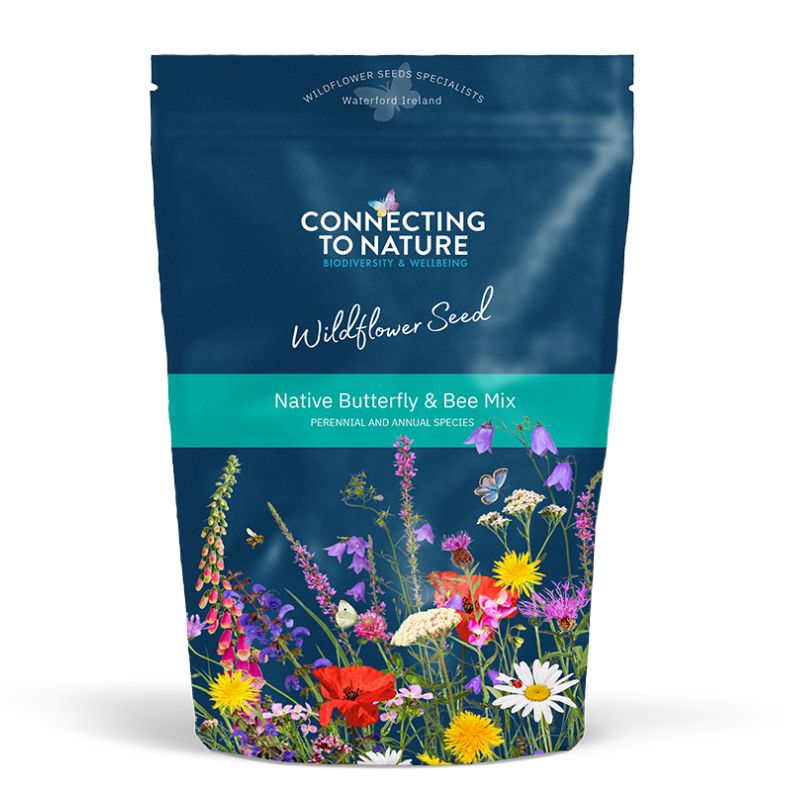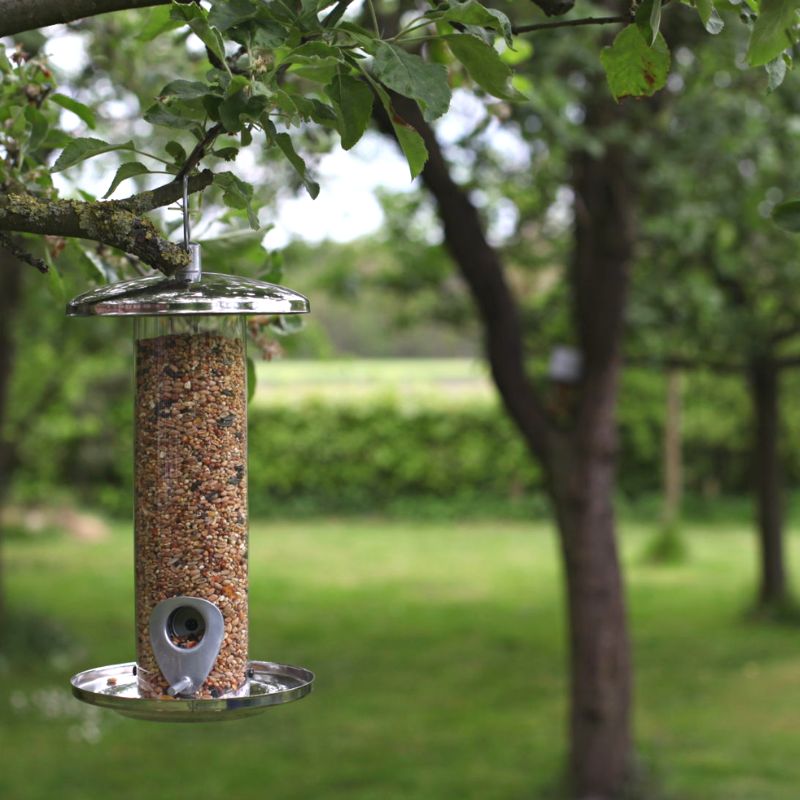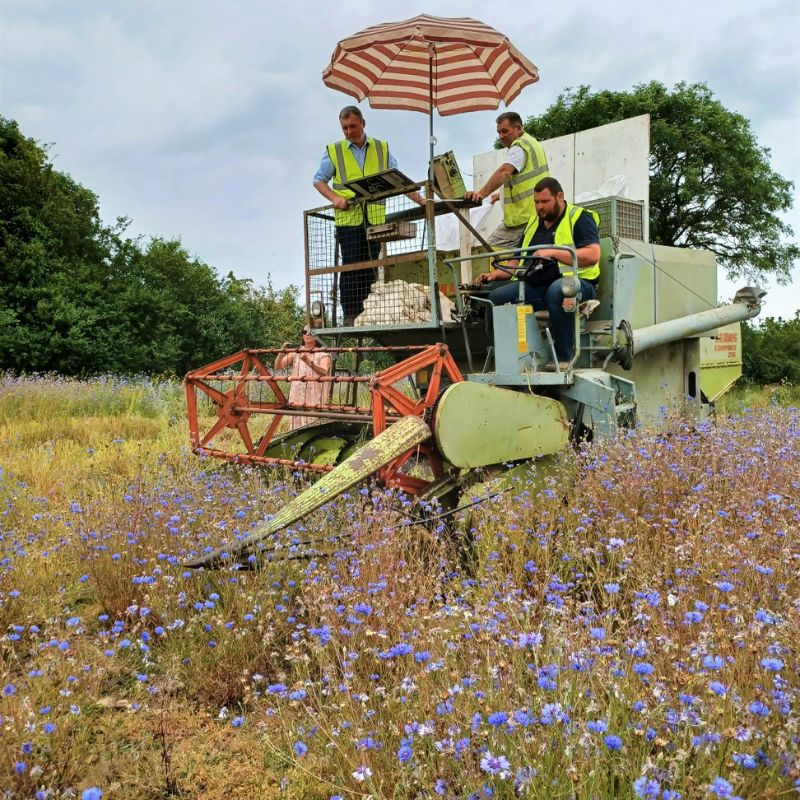How can you control pests without pesticides?
Controlling pests without pesticides - Let nature lend a helping hand.
Over the past few decades, we have got used to particular gardening methods and have been provided with a wide range of products to keep the garden clean and pests at bay. Using chemical solutions to control pests has been a staple of the home gardener since the 1950s and are, admittedly, a quick and easy method of removing pests such as greenfly and scale insects. However, they are unfortunately indiscriminate and can be destructive to other forms of wildlife that may not have been the intended target.
Controlling pests without pesticides
In recent years, there has been an increasing interest in encouraging natural pest control in the garden. A significant part of this involves creating mixed habitats and various plants to encourage a wide range of insects to visit or make their home in the garden.
How can I attract beneficial insects to my garden?
Using a wildflower meadow for pest control is as easy as just planting and waiting. As the season rolls on and the flowers begin to bloom, new insects will gradually start to make their way into the garden.
A wildflower meadow is not just a safe haven and food source for bees and butterflies; it is a habitat that supports an ecosystem. Part of this ecosystem includes the presence of what are called 'beneficial insects'. What are 'beneficial insects', you might wonder? Beneficial insects are insects that provide service in your garden and help make life easier, by acting as agents of pest control. The three main types of beneficial insects are pollinators, predators, and parasitic insects.
Predators are carnivorous insects that feed off other insects. Luckily enough, most of their favourite prey are the very same pests that we want rid of from our gardens. These predators need a mix of wildflower species as a nectar and pollen source and to provide protection from larger predators such as birds. The cover which a mixed wildflower meadow provides is ideal for these insect species.
Adult predators, such as the popular Ladybird, Hoverflies, and Lacewings, feed on aphids as part of their diet, but these predators' larvae are the real predators. The delicate Lacewing, for example, travels from flower to flower, eating pollen, nectar, and small insects. If she finds a congregation of aphids, she will lay tiny white eggs close by. When the larvae emerge, they feast on the delicious aphids and can eat up to 100 in a week, more than earning the nickname 'aphid lion'. It is said that if there are one or two Lacewing larvae in every square foot of the garden, then aphids would be eliminated in a matter of just two weeks. As the female Lacewing lays up to 1000 eggs in about four weeks, this is an extremely useful pest control army to have at your disposal!

Parasitic insects are mostly made up of tiny parasitic wasps. Instead of laying close to the pest, this wasp lays its eggs directly on, or even in, its victim! The larvae then immediately begin to feed on the prey. Parasitic wasps do not predate exclusively on small insects such as aphids; they will also set their sights on larger prey such as caterpillars and cutworms.
In the below image, you can see the Cabbage White Caterpillar which has become the unwitting host for the parasitic wasp Cotesia Glomerata (Braconidae). The wasp infects the host larvae with its eggs which then develop inside it. Up to 150 grubs can be in each caterpillar.

Having many wildflower species in your garden will increase the chances that one or more of these insect species will come. It is important to have the diversity of plants that a wildflower seed mix provides as wildflower habitats will support plants which each insect species relies upon.
Predator insects are attracted to several plant species. Plants such as clover, wild carrot, and Ox-eye daisy are universally loved by all pollinators, predators, and parasitic insects. Other popular plants, including Yarrow and Wild Carrot, are a favourite food source for the parasitoid wasp, while Ladybirds and Hoverflies are particularly attracted to Dandelions and Corn Marigold in full bloom.
How to keep pests from your prized plants and vegetable patches
A wildflower habitat can also serve as a distraction to the pests themselves to keep them away from your more treasured plants. The range of plant species present in wildflower plantings means that a tastier plant than your cherished rose or your prize cabbage may be a preferable target for an aphid or caterpillar!
Recent research has shown that wildflower strips sown through crop fields may reduce pest damage and populations by up to 40% due to the presence of predator insects. These strips also provide perfect pollinator habitat and the farm benefits from pollination services of these pollinators. If these strips work for the farmer, there is no reason to believe they won't work for your vegetable plot.
For wildflower habitats to work successfully, changes in typical gardening methods must be made. The biggest of these is the use of pesticides. There is a very simple reason for eliminating the use of pesticides in your garden – remove the pest, remove the food, remove the food, remove the predator. Predators will not hang around if there is nothing to eat.

Providing shelter for predators to over-winter
Predator insects need somewhere to over-winter in your garden. If they are already present when spring arrives, a larger population will have been established when the pests multiply later on. Consider providing areas where they can hibernate or shelter during the winter months.
Provide shelter with small piles of hollow plants stems and sticks or hang a bug hotel about a meter off the ground for them to hibernate in. Leave longer grass and 'wild' areas in quiet corners of the garden or make a small pile of stones for a solid defensive nesting site.

Most importantly, limit pesticide use to the absolute minimum. While it may be necessary on some plants, once a population of predators has been established, the pests do not last longer than a few days when they do appear.
Your garden will soon be a functioning mini ecosystem by reducing and eventually eliminating pesticide use and providing a safe nesting site. With time and patience, you will find that the insects which were pests are kept under control by a volunteer army of pest hunters working for everyone's benefit!











